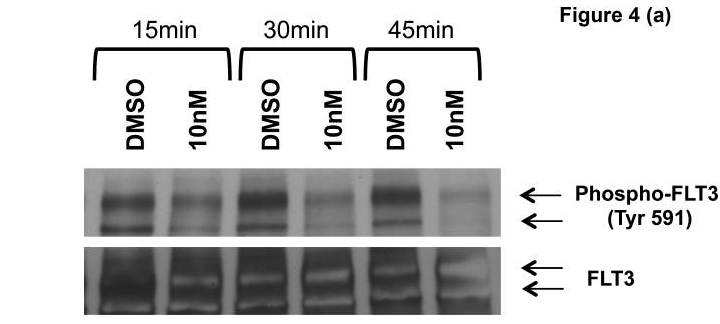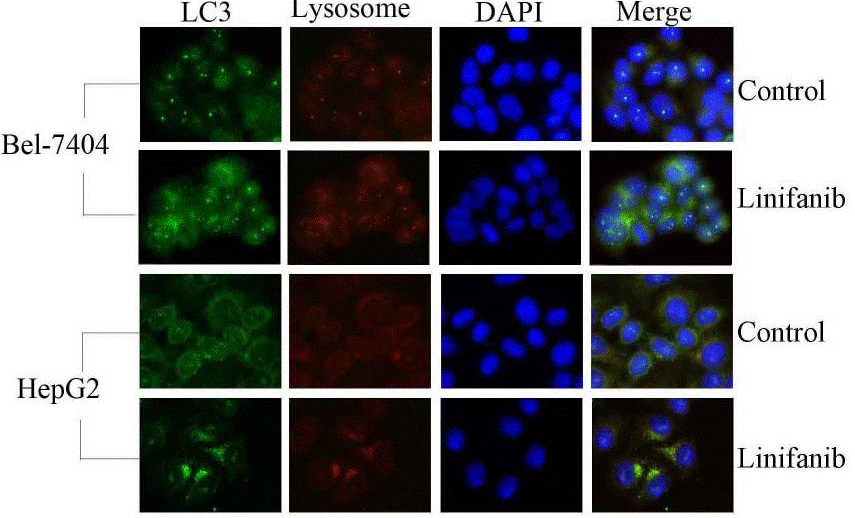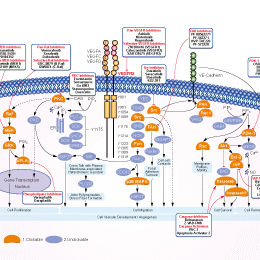
- Bioactive Compounds
- By Signaling Pathways
- PI3K/Akt/mTOR
- Epigenetics
- Methylation
- Immunology & Inflammation
- Protein Tyrosine Kinase
- Angiogenesis
- Apoptosis
- Autophagy
- ER stress & UPR
- JAK/STAT
- MAPK
- Cytoskeletal Signaling
- Cell Cycle
- TGF-beta/Smad
- DNA Damage/DNA Repair
- Compound Libraries
- Popular Compound Libraries
- Customize Library
- Clinical and FDA-approved Related
- Bioactive Compound Libraries
- Inhibitor Related
- Natural Product Related
- Metabolism Related
- Cell Death Related
- By Signaling Pathway
- By Disease
- Anti-infection and Antiviral Related
- Neuronal and Immunology Related
- Fragment and Covalent Related
- FDA-approved Drug Library
- FDA-approved & Passed Phase I Drug Library
- Preclinical/Clinical Compound Library
- Bioactive Compound Library-I
- Bioactive Compound Library-Ⅱ
- Kinase Inhibitor Library
- Express-Pick Library
- Natural Product Library
- Human Endogenous Metabolite Compound Library
- Alkaloid Compound LibraryNew
- Angiogenesis Related compound Library
- Anti-Aging Compound Library
- Anti-alzheimer Disease Compound Library
- Antibiotics compound Library
- Anti-cancer Compound Library
- Anti-cancer Compound Library-Ⅱ
- Anti-cancer Metabolism Compound Library
- Anti-Cardiovascular Disease Compound Library
- Anti-diabetic Compound Library
- Anti-infection Compound Library
- Antioxidant Compound Library
- Anti-parasitic Compound Library
- Antiviral Compound Library
- Apoptosis Compound Library
- Autophagy Compound Library
- Calcium Channel Blocker LibraryNew
- Cambridge Cancer Compound Library
- Carbohydrate Metabolism Compound LibraryNew
- Cell Cycle compound library
- CNS-Penetrant Compound Library
- Covalent Inhibitor Library
- Cytokine Inhibitor LibraryNew
- Cytoskeletal Signaling Pathway Compound Library
- DNA Damage/DNA Repair compound Library
- Drug-like Compound Library
- Endoplasmic Reticulum Stress Compound Library
- Epigenetics Compound Library
- Exosome Secretion Related Compound LibraryNew
- FDA-approved Anticancer Drug LibraryNew
- Ferroptosis Compound Library
- Flavonoid Compound Library
- Fragment Library
- Glutamine Metabolism Compound Library
- Glycolysis Compound Library
- GPCR Compound Library
- Gut Microbial Metabolite Library
- HIF-1 Signaling Pathway Compound Library
- Highly Selective Inhibitor Library
- Histone modification compound library
- HTS Library for Drug Discovery
- Human Hormone Related Compound LibraryNew
- Human Transcription Factor Compound LibraryNew
- Immunology/Inflammation Compound Library
- Inhibitor Library
- Ion Channel Ligand Library
- JAK/STAT compound library
- Lipid Metabolism Compound LibraryNew
- Macrocyclic Compound Library
- MAPK Inhibitor Library
- Medicine Food Homology Compound Library
- Metabolism Compound Library
- Methylation Compound Library
- Mouse Metabolite Compound LibraryNew
- Natural Organic Compound Library
- Neuronal Signaling Compound Library
- NF-κB Signaling Compound Library
- Nucleoside Analogue Library
- Obesity Compound Library
- Oxidative Stress Compound LibraryNew
- Plant Extract Library
- Phenotypic Screening Library
- PI3K/Akt Inhibitor Library
- Protease Inhibitor Library
- Protein-protein Interaction Inhibitor Library
- Pyroptosis Compound Library
- Small Molecule Immuno-Oncology Compound Library
- Mitochondria-Targeted Compound LibraryNew
- Stem Cell Differentiation Compound LibraryNew
- Stem Cell Signaling Compound Library
- Natural Phenol Compound LibraryNew
- Natural Terpenoid Compound LibraryNew
- TGF-beta/Smad compound library
- Traditional Chinese Medicine Library
- Tyrosine Kinase Inhibitor Library
- Ubiquitination Compound Library
-
Cherry Picking
You can personalize your library with chemicals from within Selleck's inventory. Build the right library for your research endeavors by choosing from compounds in all of our available libraries.
Please contact us at [email protected] to customize your library.
You could select:
- Antibodies
- Bioreagents
- qPCR
- 2x SYBR Green qPCR Master Mix
- 2x SYBR Green qPCR Master Mix(Low ROX)
- 2x SYBR Green qPCR Master Mix(High ROX)
- Protein Assay
- Protein A/G Magnetic Beads for IP
- Anti-Flag magnetic beads
- Anti-Flag Affinity Gel
- Anti-Myc magnetic beads
- Anti-HA magnetic beads
- Magnetic Separator
- Poly DYKDDDDK Tag Peptide lyophilized powder
- Protease Inhibitor Cocktail
- Protease Inhibitor Cocktail (EDTA-Free, 100X in DMSO)
- Phosphatase Inhibitor Cocktail (2 Tubes, 100X)
- Cell Biology
- Cell Counting Kit-8 (CCK-8)
- Animal Experiment
- Mouse Direct PCR Kit (For Genotyping)
- New Products
- Contact Us
Linifanib (ABT-869)
Synonyms: AL39324,RG3635
Linifanib (ABT-869, AL39324, RG3635) is a novel, potent ATP-competitive VEGFR/PDGFR inhibitor for KDR, CSF-1R, Flt-1/3 and PDGFRβ with IC50 of 4 nM, 3 nM, 3 nM/4 nM and 66 nM respectively, mostly effective in mutant kinase-dependent cancer cells (i.e. FLT3). Linifanib (ABT-869) induces autophagy and apoptosis. Phase 3.

Linifanib (ABT-869) Chemical Structure
CAS No. 796967-16-3
Purity & Quality Control
Batch:
Purity:
99.76%
99.76
Linifanib (ABT-869) Related Products
Signaling Pathway
Cell Data
| Cell Lines | Assay Type | Concentration | Incubation Time | Formulation | Activity Description | PMID |
|---|---|---|---|---|---|---|
| mouse 3T3 cells | Function assay | Inhibition of VEGF-induced human KDR phosphorylation in mouse 3T3 cells by ELISA, IC50=0.004 μM | 17343372 | |||
| Sf9 insect cells | Function assay | 120 mins | Inhibition of recombinant GST-tagged VEGFR2 expressed in Sf9 insect cells after 120 mins by Kinase-Glo assay, IC50=5 nM | 21708468 | ||
| human MOLM13 cells | Cytotoxicity assay | 72 h | Cytotoxicity against human MOLM13 cells harboring mutant FLT3 after 72 hrs by MTS assay, GI50=0.037 μM | 23618709 | ||
| human MV4-11 cells | Proliferation assay | 72 h | Antiproliferation activity against FLT3/ITD harboring human MV4-11 cells after 72 hrs by MTS method, GI50=0.04 μM | 21708468 | ||
| human MOLT4 cells | Proliferation assay | 72 h | Antiproliferation activity against human MOLT4 after 72 hrs by MTS method, GI50=6.7 μM | 21708468 | ||
| RS4:11 cells | Proliferation assay | 72 h | Antiproliferation activity against human RS4:11 cells expressing wild type FLT3 after 72 hrs by MTS method, GI50=9.2 Μm | 21708468 | ||
| U937 cells | Proliferation assay | 72 h | Antiproliferation activity against human FLT3 gene-deficient U937 cells after 72 hrs by MTS method, GI50=19 μM | 21708468 | ||
| Click to View More Cell Line Experimental Data | ||||||
Biological Activity
| Description | Linifanib (ABT-869, AL39324, RG3635) is a novel, potent ATP-competitive VEGFR/PDGFR inhibitor for KDR, CSF-1R, Flt-1/3 and PDGFRβ with IC50 of 4 nM, 3 nM, 3 nM/4 nM and 66 nM respectively, mostly effective in mutant kinase-dependent cancer cells (i.e. FLT3). Linifanib (ABT-869) induces autophagy and apoptosis. Phase 3. | |||||||||||
|---|---|---|---|---|---|---|---|---|---|---|---|---|
| Targets |
|
| In vitro | ||||
| In vitro | Linifanib shows inhibitory to Kit, PDGFRβ and Flt4 with IC50 of 14 nM, 66 nM and 190 nM in kinases assay. Linifanib also inhibits ligand-induced KDR, PDGFRβ, Kit, and CSF-1R phosphorylation with IC50 of 2 nM, 2 nM, 31 nM and 10 nM at cellular level and this cellular potency could be affected by serum protein. Linifanib suppresses VEGF-stimulated HUAEC proliferation with IC50 of 0.2 nM. While Linifanib has weak activity against tumor cells which are not induced by VEGF or PDGF, except for MV4-11 leukemia cells (with constitutively active form of Flt3) with IC50 of 4 nM. Linifanib could cause a decrease in S and G2-M phases with a corresponding increase in the sub-G0-G1 apoptotic population in MV4-11 cells. [1] Linifanib binds to the ATP-binding site of CSF-1R with Ki of 3 nM. [2] Linifanib (10 nM) exhibits a reduced phosphorylation of Akt at Ser473 and decreased phosphorylation of GSK3βat Ser9 in Ba/F3 FLT3 ITD cell lines. [3] | |||
|---|---|---|---|---|
| Kinase Assay | Kinase assays | |||
| Potencies (IC50 values) are determined by assays of active kinase domains cloned and expressed in baculovirus using the FastBacbaculovirus expression system or obtained commercially. For tyrosine kinase assays, a biotinylated peptide substrate containing a single tyrosine is used with 1 mM ATP, anEu-cryptate–labeled anti-phosphotyrosine antibody (PT66), and Strepavidin-APC in a homogeneous time-resolved fluorescence assay. Serine/threonine kinases are assayed using 5 μM ATP, [33P]ATP, and a biotinylated peptide substrate with peptide capture and incorporation of 33P determined using a SA-Flashplate. Linifanib is assayed at multiple concentrations prepared by serial dilution of a DMSO stock solution of Linifanib. The concentration resulting in 50% inhibition of activity is calculated using nonlinear regression analysis of the concentration response data. | ||||
| Cell Research | Cell lines | HUAEC, HT-29, HT1080, A431, MDA-435, MDA-231, H526, DLD-1, 9L and MV4-11 cells | ||
| Concentrations | 0-100 μM | |||
| Incubation Time | 72 hours | |||
| Method | Cells are seeded into 96-well plates at 2.5 × 103 per well and incubated with serum-free medium for 24 hours. Linifanib and VEGF (final, 10 ng/mL) are added and incubated for 72 hours in serum-free medium. For carcinoma cell lines, 3 × 103 cells/well are plated overnight in full growth medium. Linifanib is added to the cells in full growth medium and incubated for 72 hours. For leukemia cells, generally 5 × 104 per well are plated in full growth medium, Linifanib is added, and incubated for 72 hours. The effects on proliferation are determined by addition of Alamar Blue (final solution, 10%), incubation for 4 hours at 37 °C in a CO2 incubator and analysis in a fluorescence plate reader (544 nm, excitation: 590 nm, emission | |||
| Experimental Result Images | Methods | Biomarkers | Images | PMID |
| Western blot | phospho-FLT3 / FLT3 Beclin-1 / ATG5 / ATG7 / p62 p-PDGFRβ / PDGFRβ/ p-AKT / AKT / p-mTOR / mTOR / p-S6K |

|
21471285 | |
| Immunofluorescence | LC3 |

|
25327881 | |
| In Vivo | ||
| In vivo | Linifanib (0.3 mg/kg) results in complete inhibition of KDR phosphorylation in lung tissue. Linifanib also inhibits the edema response with ED50 of 0.5 mg/kg. Linifanib (7.5 and 15 mg/kg, bid) significantly inhibits both bFGF- and VEGF-induced angiogenesis in the cornea. Linifanib inhibits tumor growth in flank xenograft models including HT1080, H526, MX-1 and DLD-1 with ED75 from 4.5-12 mg/kg. Linifanib also shows efficacy in A431 and MV4-11 xenografts at low dose levels. Linifanib (12.5 mg/kg bid) reveals a decrease of microvasculure density in MDA-231 xenograft. Linifanib shows a Cmax and AUC24 hours with 0.4 μg/mL and 2.7 μg•hour/mL in HT1080 fibrosarcoma model. [1] | |
|---|---|---|
| Animal Research | Animal Models | H526, DLD-1, MDA-231, MDA-435LM, HCT-116, H526, DLD-1, MDA-231, MDA-435LM, MV4-11 and MX-1 xenografts are established in mice. |
| Dosages | ~ 10 mg/kg | |
| Administration | Oral administration | |
| NCT Number | Recruitment | Conditions | Sponsor/Collaborators | Start Date | Phases |
|---|---|---|---|---|---|
| NCT01401933 | Completed | Advanced Solid Tumors |
Abbott |
May 2011 | Phase 1 |
| NCT01381341 | Completed | Advanced Solid Tumors |
Abbott |
May 2011 | Phase 1 |
| NCT01114191 | Completed | Solid Tumors |
Abbott |
May 2010 | Phase 1 |
Chemical Information & Solubility
| Molecular Weight | 375.41 | Formula | C21H18FN5O |
| CAS No. | 796967-16-3 | SDF | Download Linifanib (ABT-869) SDF |
| Smiles | CC1=CC(=C(C=C1)F)NC(=O)NC2=CC=C(C=C2)C3=C4C(=CC=C3)NN=C4N | ||
| Storage (From the date of receipt) | |||
|
In vitro |
DMSO : 75 mg/mL ( (199.78 mM) Moisture-absorbing DMSO reduces solubility. Please use fresh DMSO.) Water : Insoluble Ethanol : Insoluble |
Molecular Weight Calculator |
|
In vivo Add solvents to the product individually and in order. |
In vivo Formulation Calculator |
||||
Preparing Stock Solutions
Molarity Calculator
In vivo Formulation Calculator (Clear solution)
Step 1: Enter information below (Recommended: An additional animal making an allowance for loss during the experiment)
mg/kg
g
μL
Step 2: Enter the in vivo formulation (This is only the calculator, not formulation. Please contact us first if there is no in vivo formulation at the solubility Section.)
% DMSO
%
% Tween 80
% ddH2O
%DMSO
%
Calculation results:
Working concentration: mg/ml;
Method for preparing DMSO master liquid: mg drug pre-dissolved in μL DMSO ( Master liquid concentration mg/mL, Please contact us first if the concentration exceeds the DMSO solubility of the batch of drug. )
Method for preparing in vivo formulation: Take μL DMSO master liquid, next addμL PEG300, mix and clarify, next addμL Tween 80, mix and clarify, next add μL ddH2O, mix and clarify.
Method for preparing in vivo formulation: Take μL DMSO master liquid, next add μL Corn oil, mix and clarify.
Note: 1. Please make sure the liquid is clear before adding the next solvent.
2. Be sure to add the solvent(s) in order. You must ensure that the solution obtained, in the previous addition, is a clear solution before proceeding to add the next solvent. Physical methods such
as vortex, ultrasound or hot water bath can be used to aid dissolving.
Tech Support
Answers to questions you may have can be found in the inhibitor handling instructions. Topics include how to prepare stock solutions, how to store inhibitors, and issues that need special attention for cell-based assays and animal experiments.
Tel: +1-832-582-8158 Ext:3
If you have any other enquiries, please leave a message.
* Indicates a Required Field
Tags: buy Linifanib (ABT-869) | Linifanib (ABT-869) supplier | purchase Linifanib (ABT-869) | Linifanib (ABT-869) cost | Linifanib (ABT-869) manufacturer | order Linifanib (ABT-869) | Linifanib (ABT-869) distributor







































